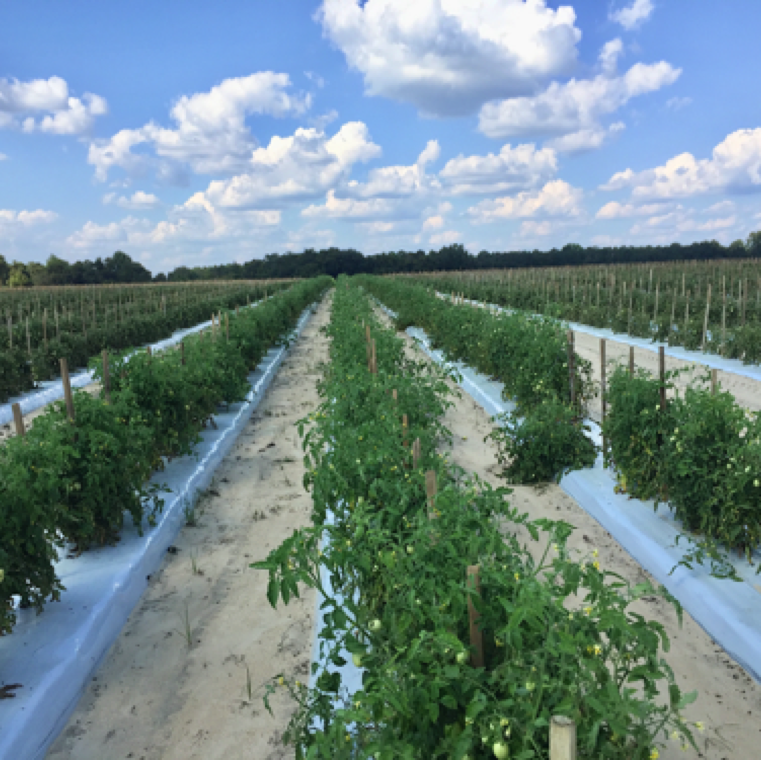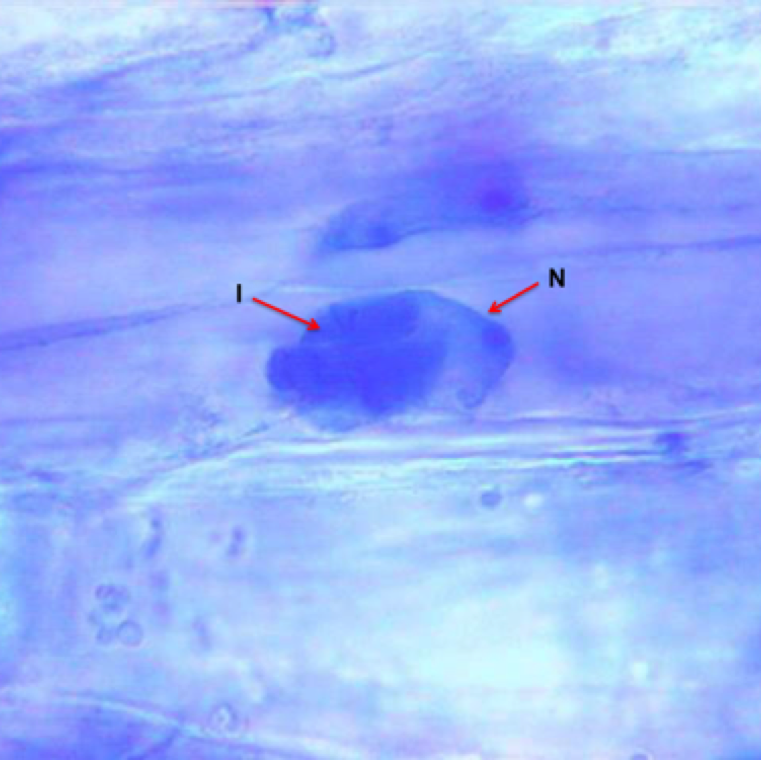

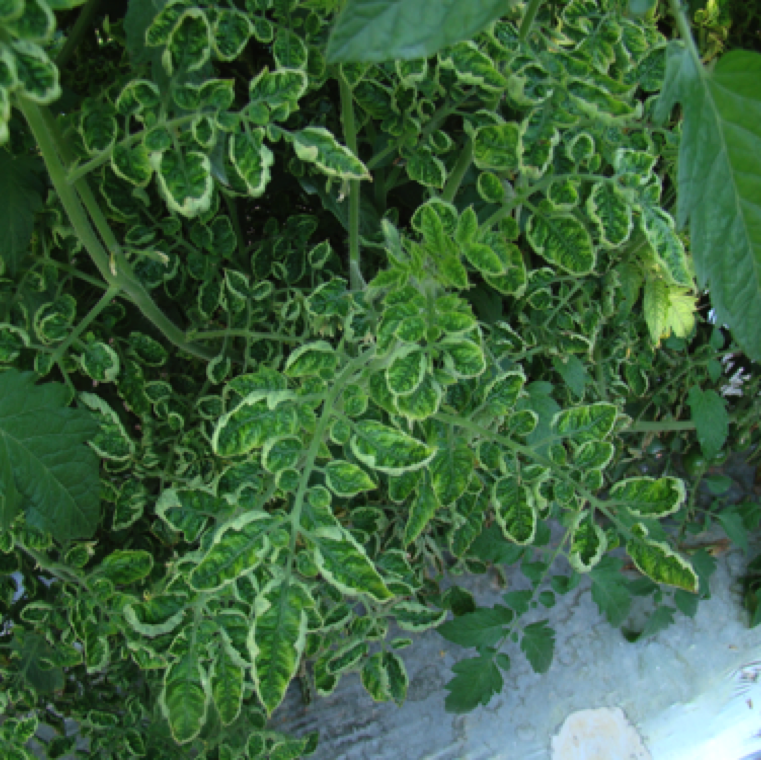
Spread of TYLC is by the feeding of TYLCV infected adult whiteflies. Mechanical or seed transmission is not known to occur. Upward curling and yellowing of the leaves is an early symptom.
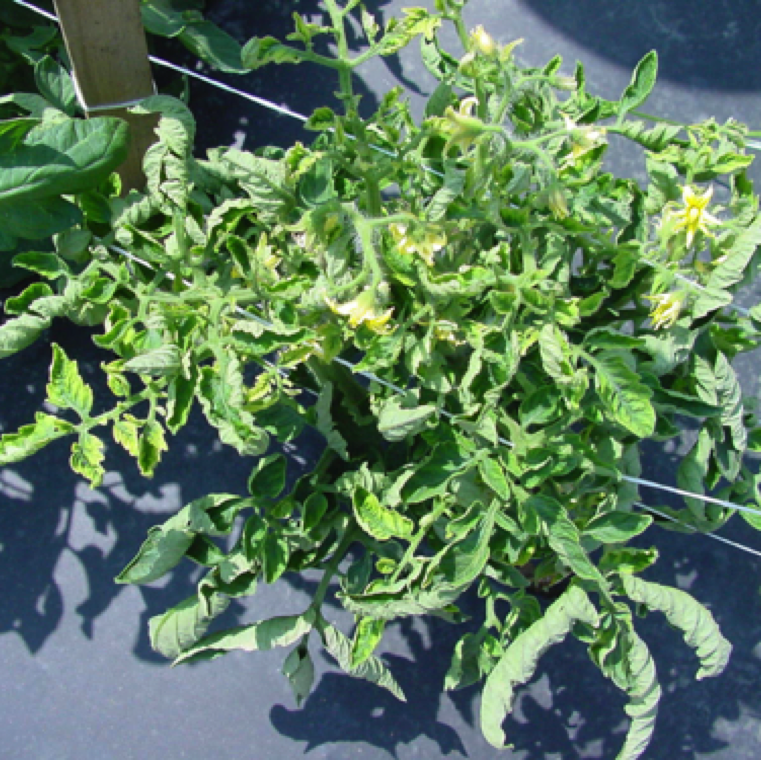
Silverleaf whiteflies acquire TYLCV when larva or adults feed on infected plants, but is not transmitted through their eggs. Rolling of leaves and stunting of plants is a characteristic symptom .
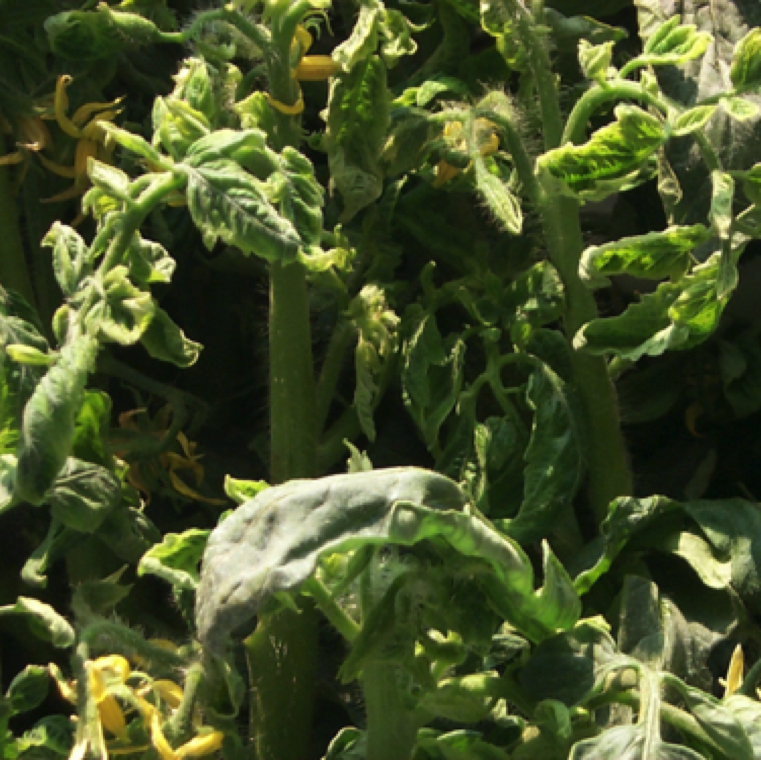
Another characteristic symptom associated with stunted plants in enlarged stem on severely deformed plants in field production. In most cases none of the fruits from these plants are marketable.

Although rarely seen TYLCC can affect young transplants causing yellowing and curling of leaves in transplant production facilities.
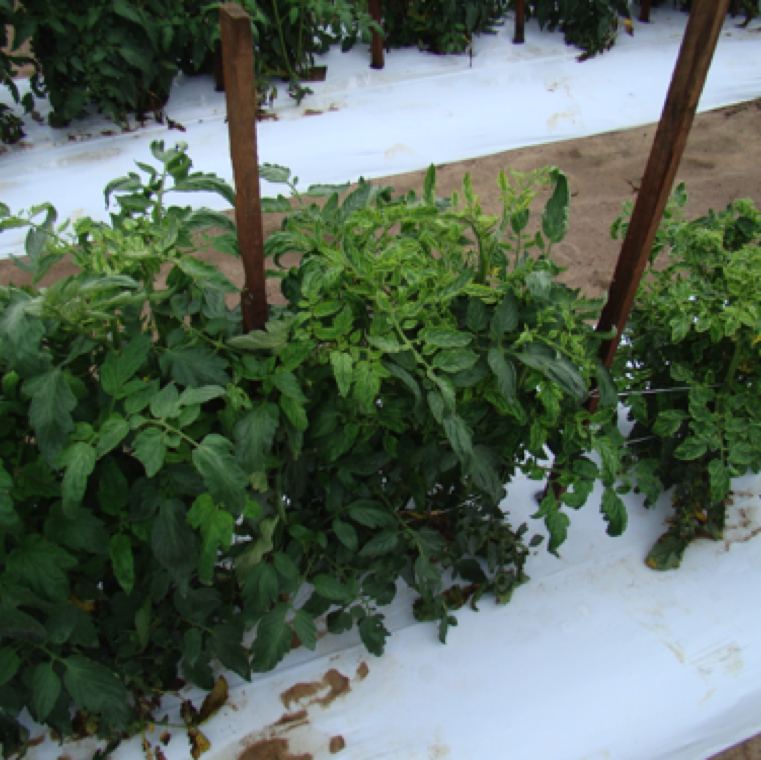
Symptoms of yellow leaf margin, upward leaf curling, and stunting due toTYCLV infection could start at any stage in crop production, and could affect yield.
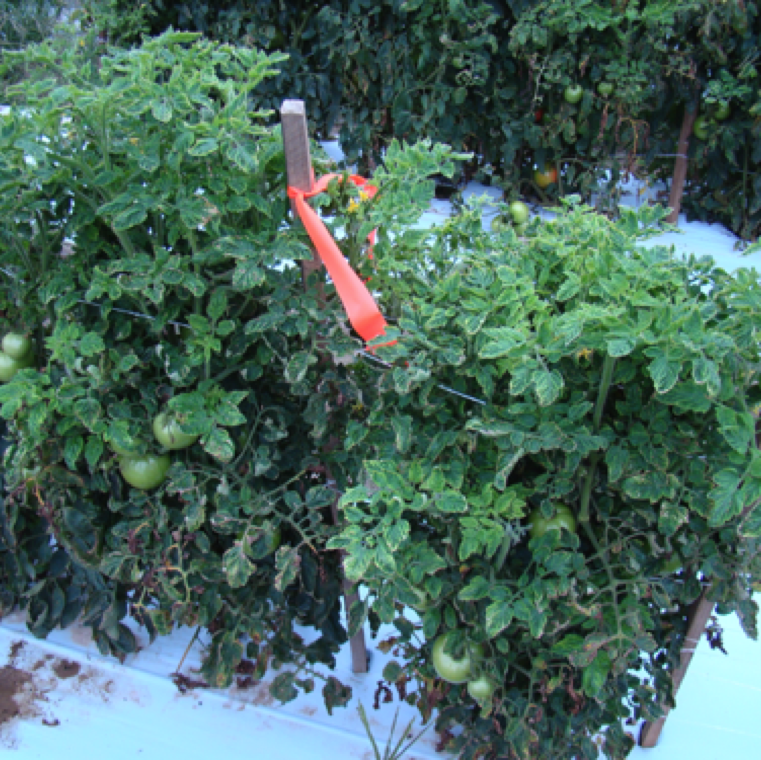
Leaves of plants affected with TYLCV may show severe necrosis and blighting of leaves. In these circumstance, fruits will be exposed to sunlight causing sunscalding.
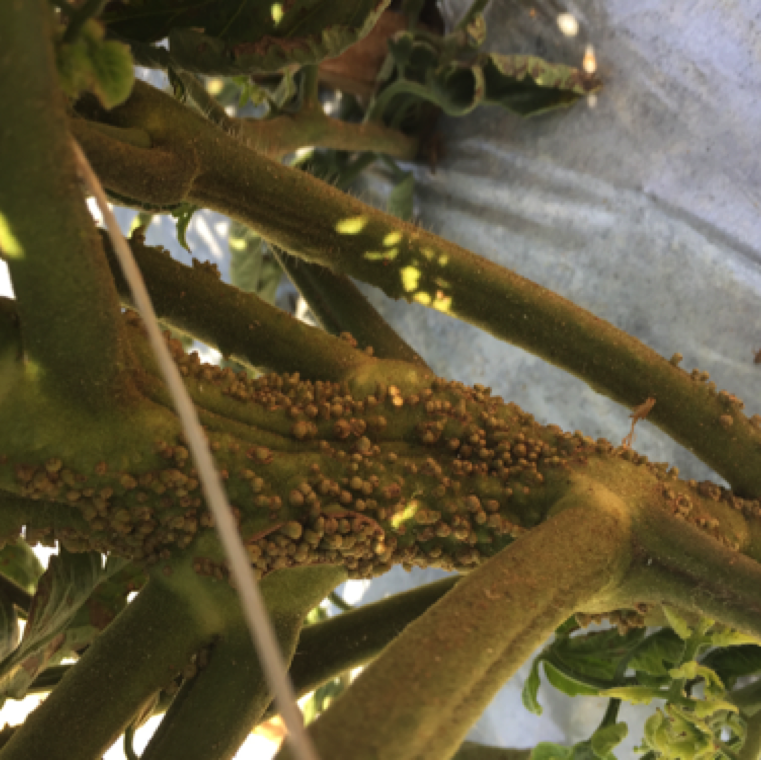
Plants affected by TYLCV may have enlarged stem with numerous adventitious roots. However this symptom could be also due to other viruses, bacterial diseases or abiotic factors.
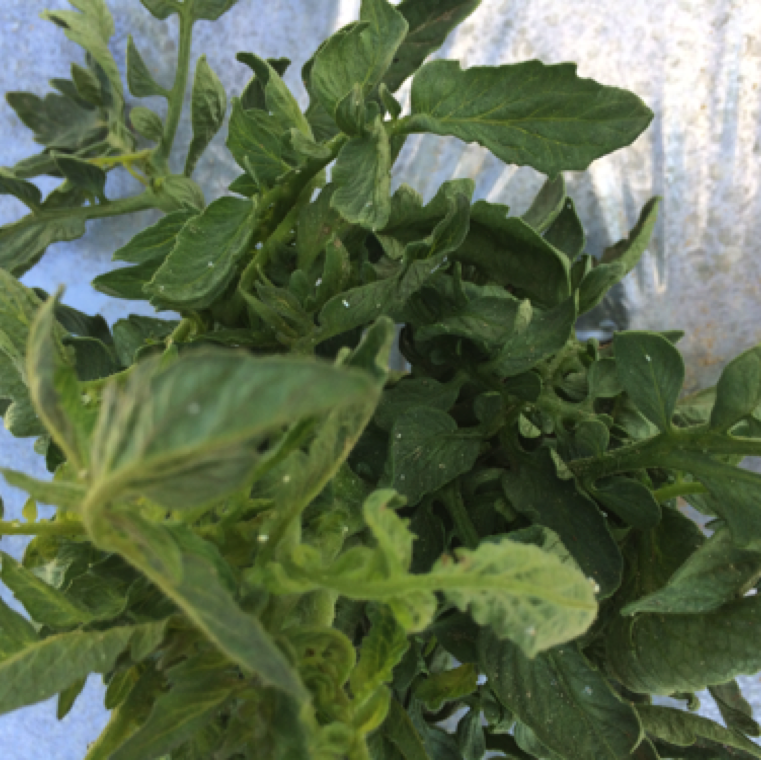
Whiteflies may be found on the top of the leaves or on the underside of the leaves. Whitefly populations and recent presence of TYLCV in an area can be useful predictors of potential disease outbreaks.
TOMATO YELLOW LEAF CURL
Virus causal agent: Tomato yellow leaf curl virus - TYLCV (Genus: Begomovirus), Virus vector: Sweet potato whitefly
Tomato diseases
